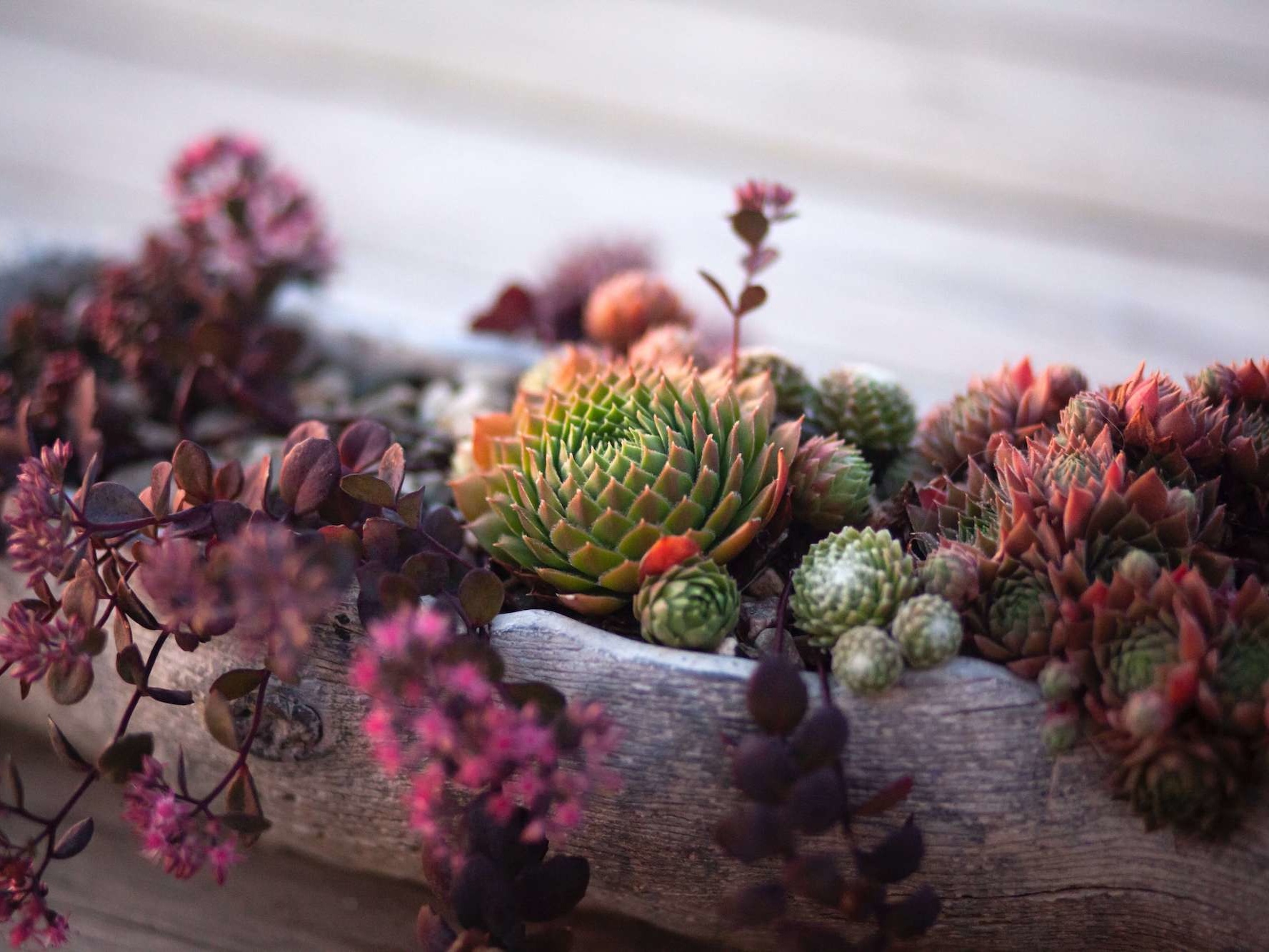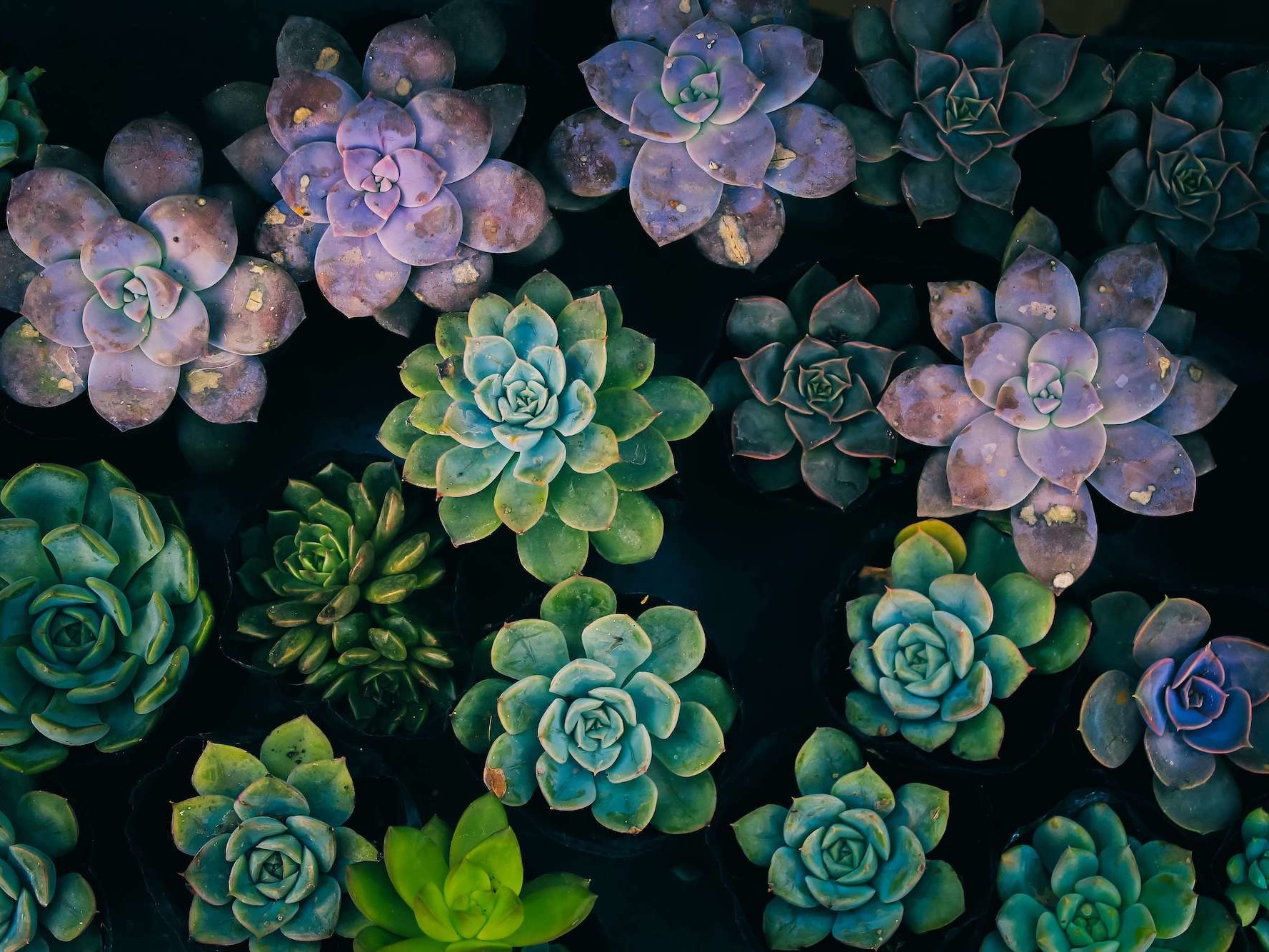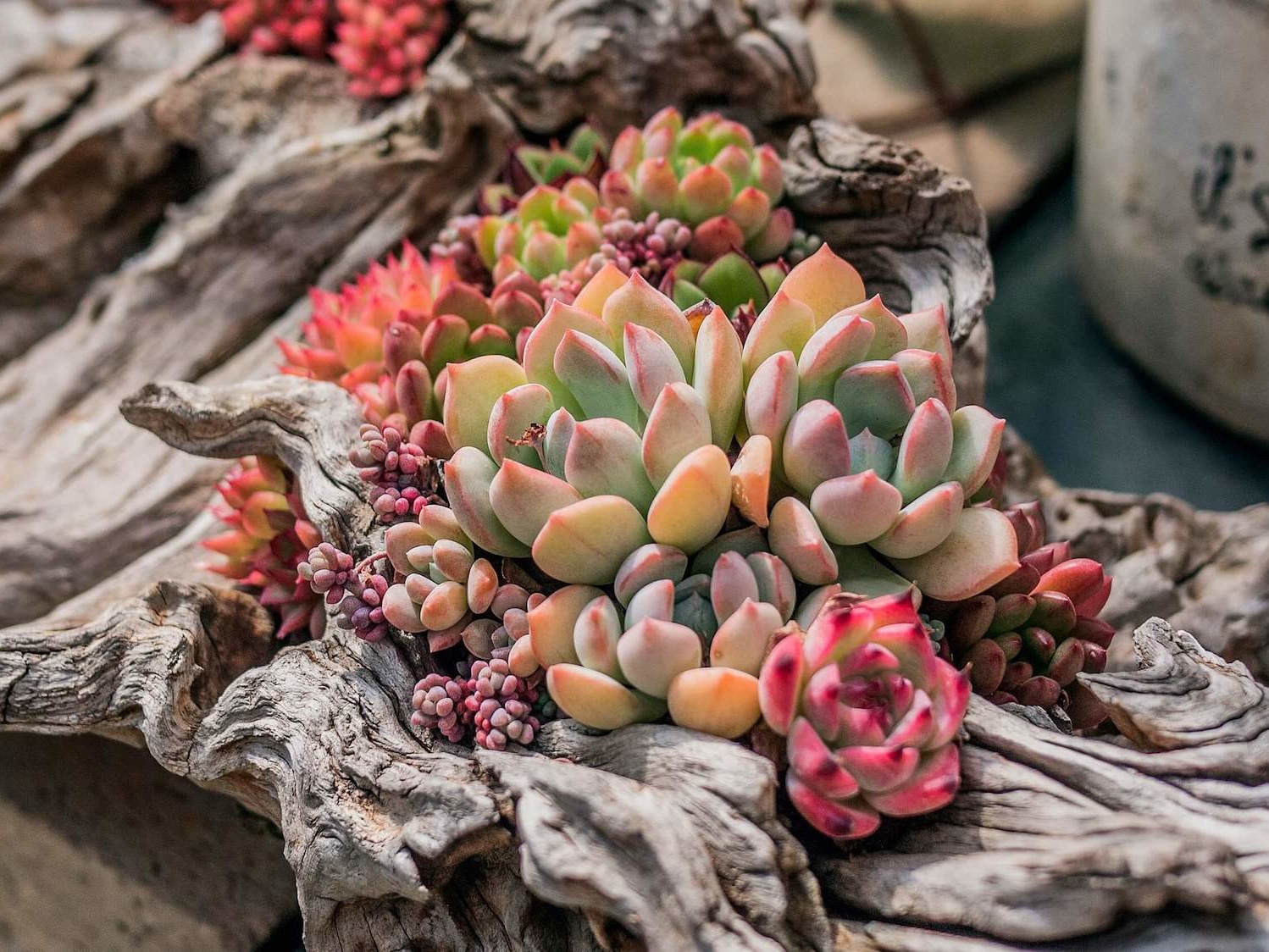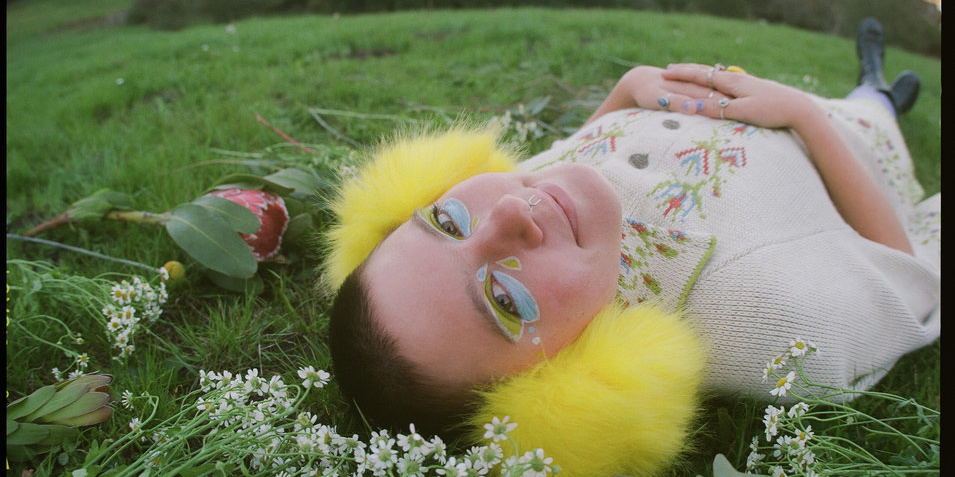Beginners guide to being the best plant parent and impressing your followers
I’d bet money that there is not another family of plants that give more variety and abundant color choices than succulents. Yes, most succulents can be found primarily in a shade of green or are green with an additional splash of color at the tips, but none the less, and bets aside, succulents come in all colors of the rainbow. So, let’s chase the rainbow and impress your followers on social media because after all that’s what it all comes down to.
Here you go, I did the work for you, you’re welcome! Below you’ll find two succulents per shade because I could not for the life of me choose one. These will all surely up your content game and have your audience be super jelly:
Red - Crassula Capitella ‘Campfire’, Crassula Capitella ‘Red Pagoda’
Orange - Sedum Nussbaumerianum ‘Coppertone Stonecrop’, Euphorbia Tirucalli ‘Fire Sticks’
Yellow - Aeonium ‘Kiwi’, Sedum Japonicum ‘Tokyo Sun’
Green - Senecio Rowleyanus ‘String of Pearls’, Crassula Ovata ‘Skinny Fingers’
Blue - Sedeveria ‘Blue Burrito’, Echeveria ‘Hercules’
Indigo - Sempervivum ‘Chocolate Kiss ’, Aeonium Arboreum ‘Black Rose’
Violet - Echeveria ‘Purple Pearl’, Echeveria ‘Neon Breakers’
"most succulents can be found primarily in a shade of green or are green with an additional splash of color at the tips"
Learning time
But wait, let’s dive in and teach you a thing or two. I mean, if you’re gonna go through all the effort to impress your following, then you might as well not kill each plant right off the bat. Plus, what if they ask to see how your succulents are doing in the future? A totally reasonable question to ask someone, “How are you? How are your plants?” you gotta be ready for the tough questions. Fortunately for you, I am here to help.
First, a little background so we can start from the ground up, pun intended –
The name succulent derives from the Latin word sucus. Pronounced sˈsʌkjʊs or as I like to joke, suckas. Sucus translates to juice, sap, or moisture. Also, interestingly enough sucus figuratively refers to strength, vitality, energy, and life. All of which are attributes that succulents do have, primarily because of their leaves, who hold that yummy vital juice. This is the kind of juice we could only dream of as humans, I guess our equivalent would be sunscreen. Whomp whomp. Back to the topic at hand, succulents pack and save their nourishment in their leaves making them hard to kill and means that as a plant parent you do not need to water very often or worry about fertilizing them. They are self sufficient and drought tolerant which sounds like the perfect baby, right? I’ll answer for you. Yes.
Succulents come in all shapes and sizes (don’t we all!? Amen!) from upright and vertical to drapey, compact, or wide. And, they come in almost every shade imaginable, making it fun to plant together. Such variety makes it easy to find a favorite, or two, or like a rainbow, seven 🙂
Fun Fact
You know that chalky substance you see and feel on most succulents? Well, that’s called epicuticular wax, and it’s there for a reason. You might have also seen it on other items in your kitchen, such as with grapes, blueberries, kale, and plums. It’s tempting to wipe that wax away, however, like scales on a butterfly wing, it’s there for a reason. Leave it alone! This wax matter guards the leaves against multiple things: it helps reflect the UV from the sun, aids in naturally defending itself from pests, since insects have a hard time walking on it and layering their eggs, and it serves to prevent moisture from escaping the leaves. It’s the bee’s knees!
Back to business
Now, back to business, let’s go over the basics such as the soil, watering, and amount of light succulents need. Knowing all of this will surely make you the greatest plant parent & will make you a trendy individual on the internets.
Water
Water: Don’t mist succulents or pour water directly on their leaves; this can lead to rot. Instead, water the dirt thoroughly when it appears dry. Depending on where your succulent is located, the soil may dry quickly/slowly, so stick your finger slightly in and feel it. Use your instinct but know that succulents are, fortunately for us, tolerant of under-watering. Although, note that younger plants require a more frequent watering schedule, as opposed to mature ones, due to their roots still developing and growing.
Thus, to sum it up, generally, water a young succulent once a week and a mature succulent three times a month. Adjust accordingly. Did you get that? Good!
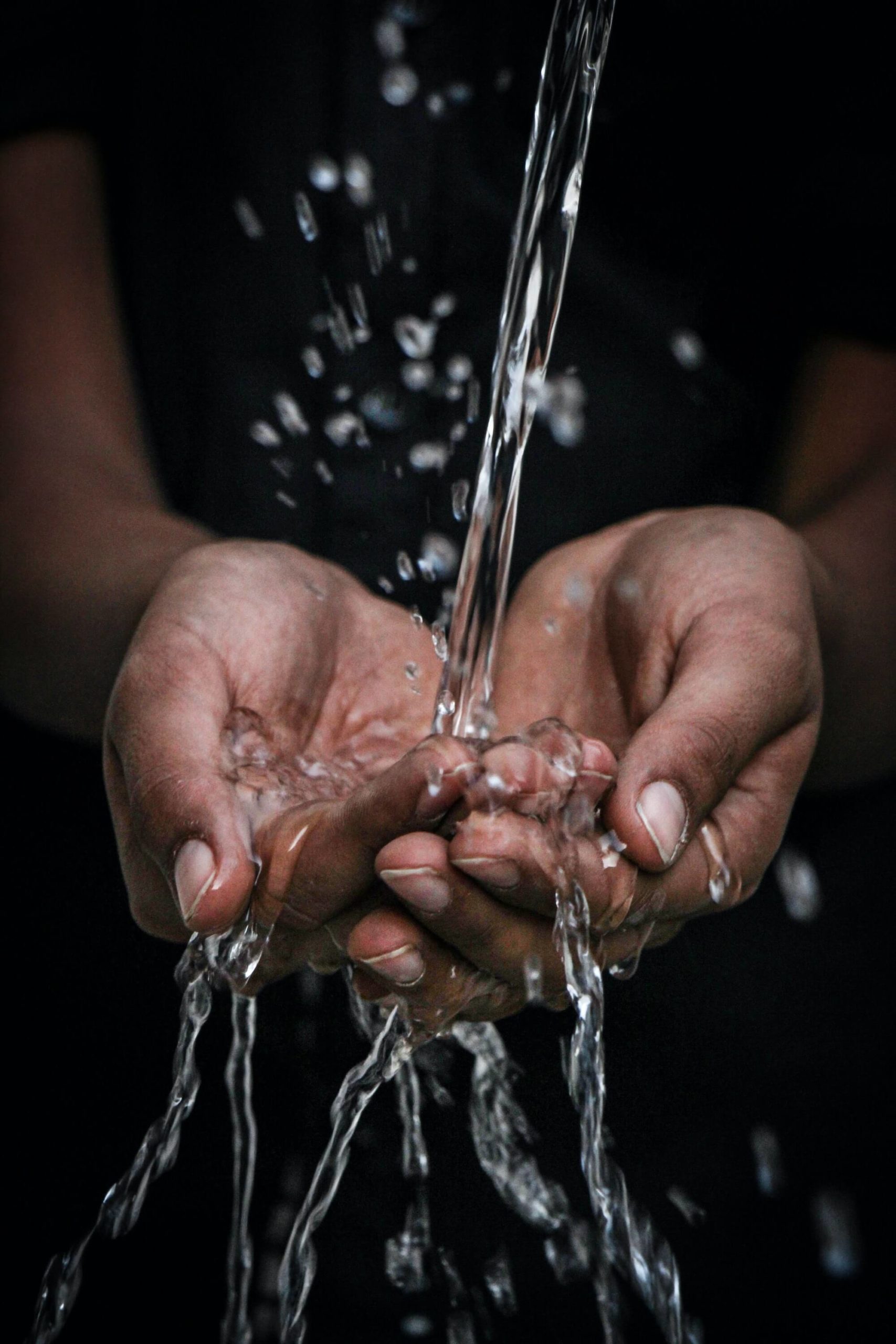
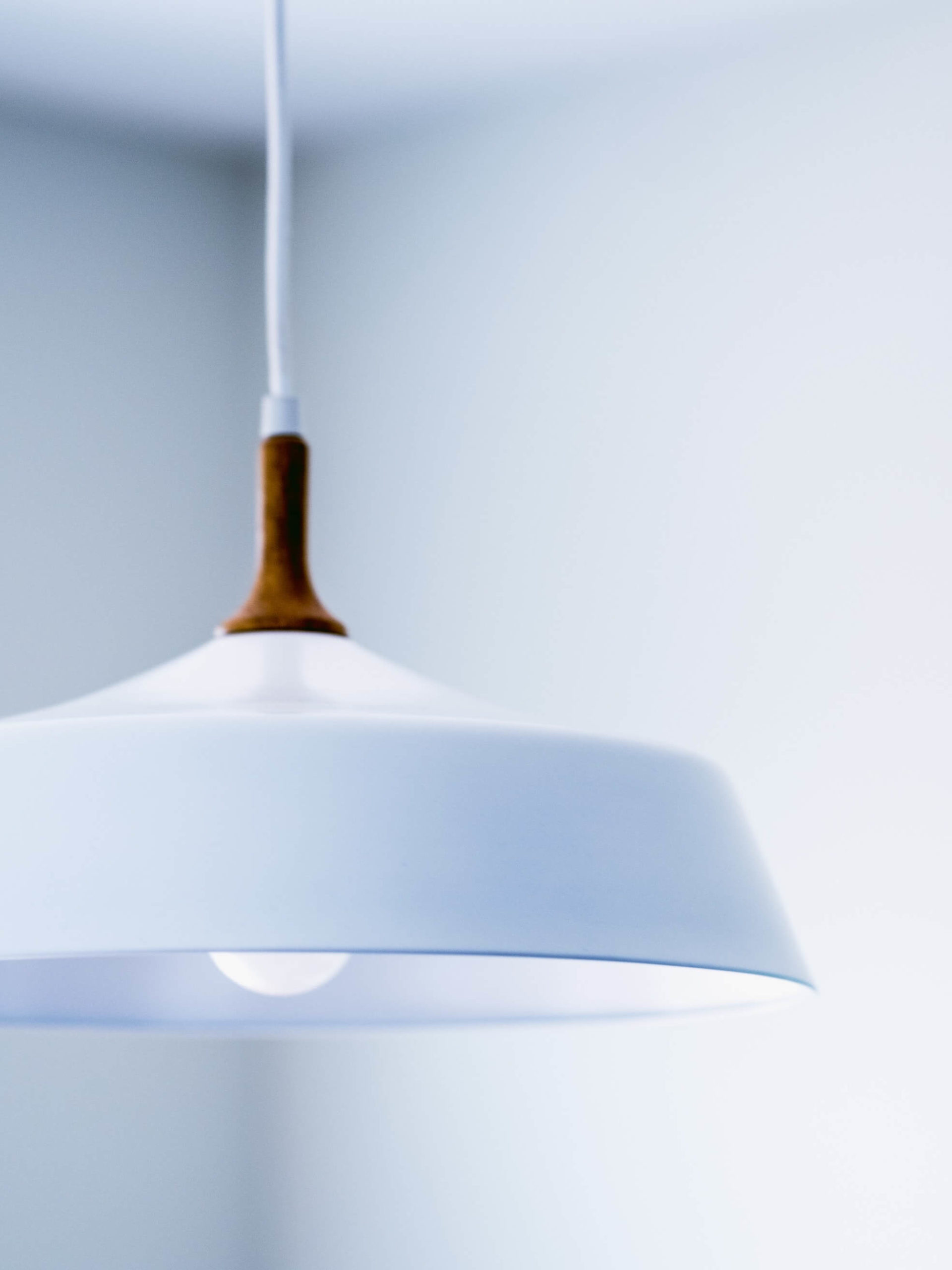
Light
Succulents love the sun! Yet, indoors we don’t always have the best options; therefore, some succulents’ color will become dull over time, or some varieties will grow extensions stretching towards the light. Luckily, there are a few succulents whose light tolerance is low like, Jade (love me a good Jade ps). Otherwise you can place your succulents outdoors or purchase a GrowLight. What the heck is a GlowLight? Good question, it’s a light fixture that you can buy that will fool your plant into believing it’s actually the sun. I suggest LED white lights that will emit bright light onto plants without heating them or burning them. LED’s are affordable and have a long life span.
Soil
Well-draining potting soil will set you up for success. It’s always a good idea to mimic a plant’s natural environment, so in this case, that means sandy and gritty soil. Also, using a pot (if indoors) that has a drainage hole. Otherwise, water can sit near the roots and cause rot. Yuck! FYI: pebbles at the bottom will not help if there’s no drainage hole in the pot. In fact, it might be a place for bacteria to grow which will in turn, leave you with an unhappy succulent. Another essential piece: you know all that sand you’ve been collecting in your shoes and pockets from your day at the beach? Well, toss it out and do not use it in your succulent’s soil mixture. Salt will remove moisture! “No thanks” says your succulent babies, cuz they speak if you didn’t know by now.
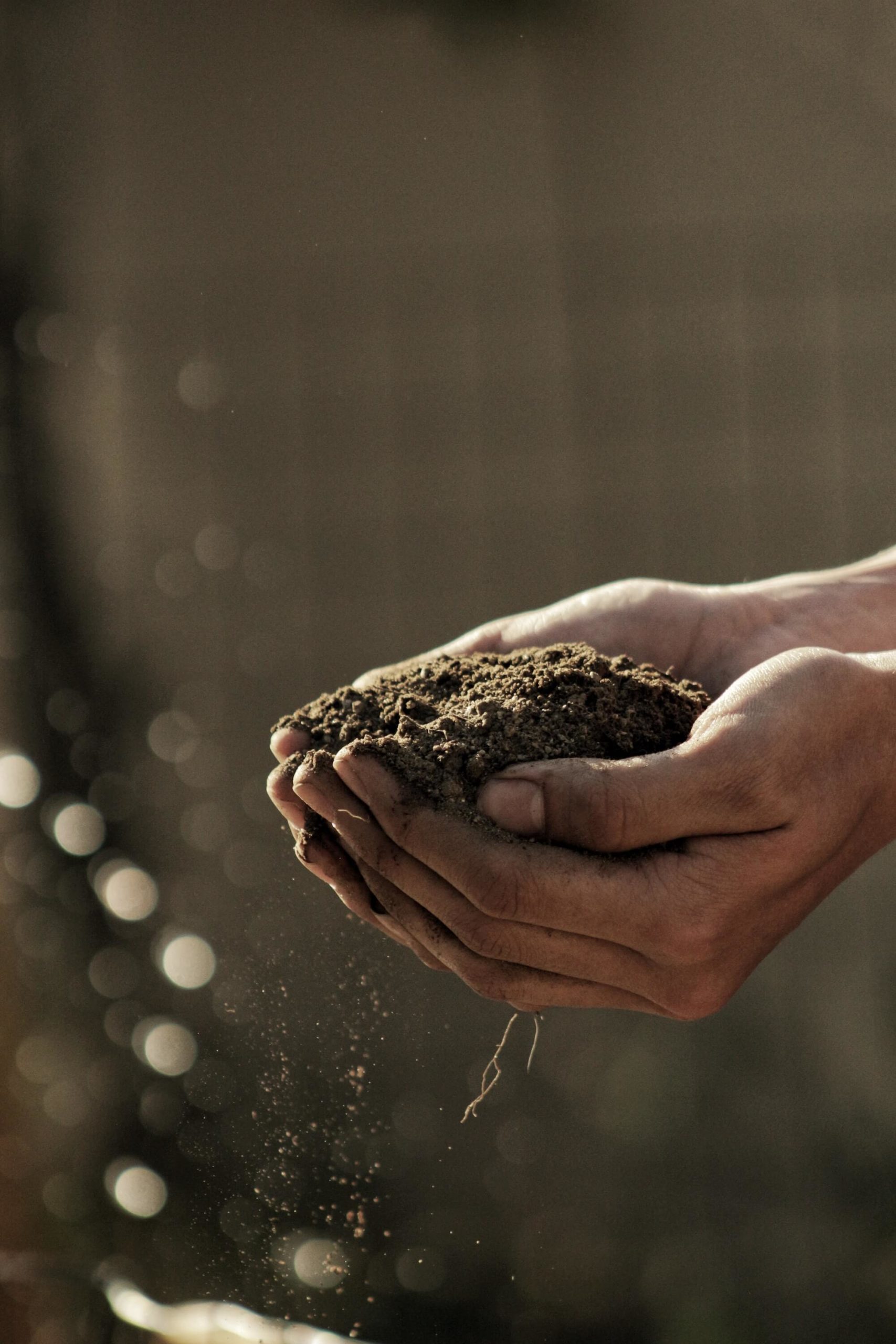
Lastly, because I want to keep dropping that v good knowledge, here are a few tips to ensure your succulent rainbow success –
Tips
- Seeing your succulent grow a flower is always rewarding, but if you’d like that particular plant to become bigger, then carefully snip the flower off as close to the base as possible. That’ll save the plant energy to place back into itself. However, sadly you cannot plant that flower into the soil.
- Whenever a leaf or flower becomes brown and dry, this could mean you aren’t watering enough, and it should be removed.
- If you see leaves that are yellow and bloated, that could mean you’re overwatering, remove those leaves, and water less.
- Even under perfect conditions, pests still might appear, uninvited of course. You can place warm water and soap in a spray bottle and mist the bugs or 70% isopropyl alcohol, which can be purchased at a pharmacy. Hooray for options!
Hopefully, this has gotten your creative rainbow juices flowing and, more importantly, will impress all of your following on the IGeezy, Tik Tokkity, Facebooby, platforms. Comment below with any questions you might have or better yet, upload a pic of your colorful succulent collection and tag @themellowsf, then we can be best friends!
Plant buds forever, over and out,

